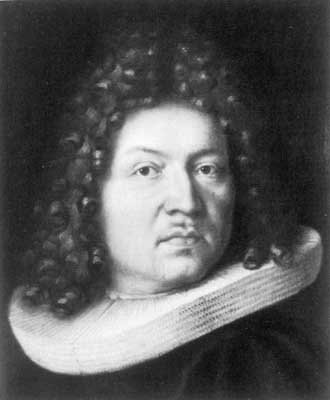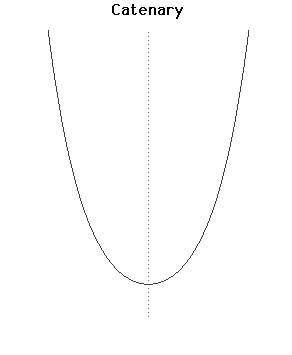- About MAA
- Membership
- MAA Publications
- Periodicals
- Blogs
- MAA Book Series
- MAA Press (an imprint of the AMS)
- MAA Notes
- MAA Reviews
- Mathematical Communication
- Information for Libraries
- Author Resources
- Advertise with MAA
- Meetings
- Competitions
- Programs
- Communities
- MAA Sections
- SIGMAA
- MAA Connect
- Students
- MAA Awards
- Awards Booklets
- Writing Awards
- Teaching Awards
- Service Awards
- Research Awards
- Lecture Awards
- Putnam Competition Individual and Team Winners
- D. E. Shaw Group AMC 8 Awards & Certificates
- Maryam Mirzakhani AMC 10 A Awards & Certificates
- Two Sigma AMC 10 B Awards & Certificates
- Jane Street AMC 12 A Awards & Certificates
- Akamai AMC 12 B Awards & Certificates
- High School Teachers
- News
You are here
Napier's e - Huygens, Leibniz, and Two Bernoullis
In 1690, Jakob Bernoulli (1654-1705) proposed the determination of the catenary or “chain-curve” as a prize problem. Galileo (1564-1642) was the first to pose the question of the mathematical shape of this curve, the shape a chain takes due to gravity when suspended from its ends. The word "catenary" is taken from the Latin catena meaning chain. (Galileo conjectured that the catenary was a parabola, but this was disproved by Joachim Jungius (1587-1657) in 1669 [9].)

Jacob Bernoulli

Along with Jakob himself, correct solutions to the catenary problem were given by Sir Isaac Newton (1642-1727) (anonymously) , Gottfried Wilhelm Leibniz (1646-1716), Christiaan Huygens (1629-1695), and Jakob’s younger brother Johann Bernoulli (1667-1748). Huygens was the first to use the term catenary for this problem in a 1690 letter to Leibniz. Though catenary is now the standard term, it was also called the alysoid or chainette [9].

Christiaan Huygens
In modern notation, the solution to the catenary is the hyperbolic function
y = (a/2)(ex/a + e-x/a) = a cosh(x/a).
Correspondence between Leibniz and Huygens discussing the prize problem in October 1690 and January 1691 indicates that Leibniz was aware of the constant 2.7182… In his discussion of the above solution to the catenary, he refers to the constant base (our e) as b [9]: “b estant une grandeur constante, dont le logarithme est 1, et le logarithme de 1 estant 0” [3, p. 13].
This notation probably did not become widespread for two reasons. First, this was in personal correspondence and not a published work. During this time period, many major mathematical and scientific discoveries were made known through personal correspondence that was then circulated among colleagues. Secondly, since the time of Descartes, a, b and c were commonly used to denote the coefficients of polynomials. This might help explain why the use of a to denote the base of the natural logarithm was not adopted either. However, it was suggested in a 1703 review of a textbook on fluxions [3]. So even though b is not a good choice for e, along with a and c, maybe we should call it l for Leibniz’s number. I can’t think of any conflicts with l. But then again, Leibniz, like Euler, gave us a lot of notation, much of our calculus notation being the most obvious. So both Euler and Leibniz do not really need the accolades.
Maybe j for Jakob Bernoulli, since we already decided that b is out. In his 1689 Tractatus de seriebus infinitis, Bernoulli gives us one of our fundamental definitions of e. While investigating various limits, he discovered the link between continuous compound interest and the limit as n appraches infinity of (1 + 1/n)n. Thus Jakob Bernoulli is often credited with defining e as this limit. By using the binomial theorem to expand (1 + 1/n)n, he found that its value was between 2 and 3. So even though he did not refine his expansion enough to get to 2.7…, he did realize that it was a constant. As early as the 1670s, Leibniz and Johann Bernoulli found series expansions for what we now denote as e, ex, and e-x, but did not explicitly state the constant.
Amy Shell-Gellasch (Beloit College), "Napier's e - Huygens, Leibniz, and Two Bernoullis," Convergence (April 2010), DOI:10.4169/loci003209




